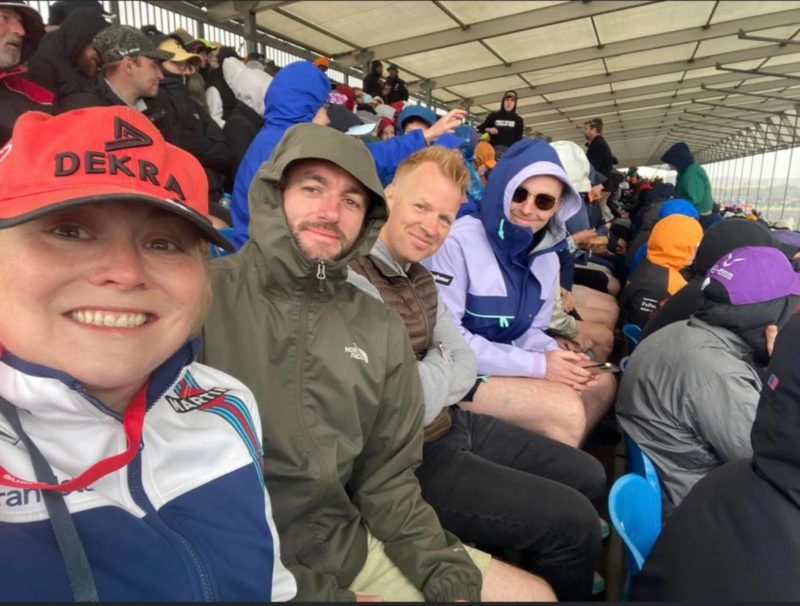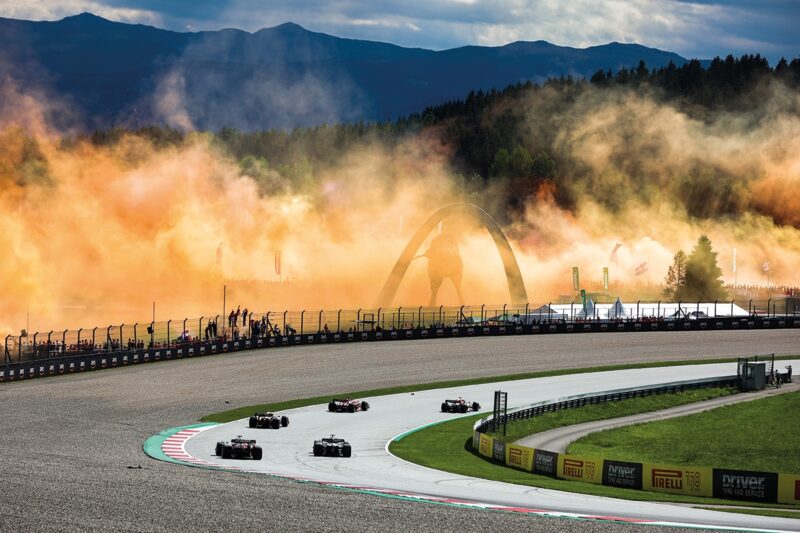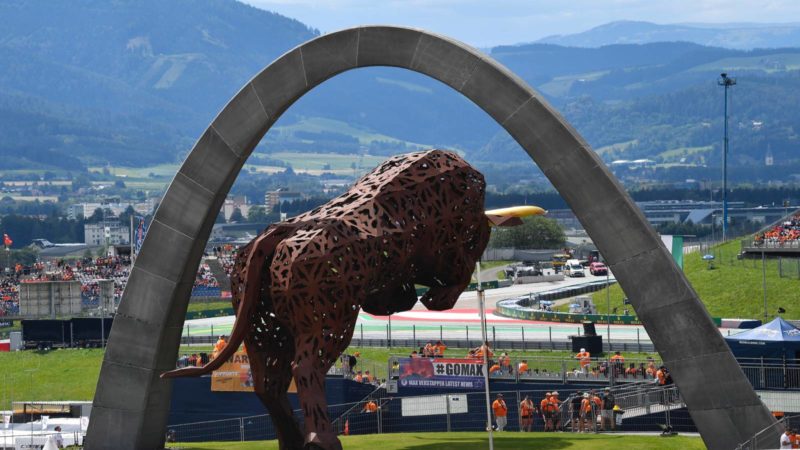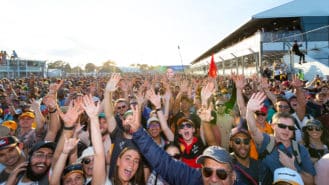British F1 fan Adam Jackson, 33 went to Spa-Francorchamps for the 2019 Belgian Grand Prix with three friends — two male and one female, who still recalls an intimidating atmosphere.
“I was speaking to her, just reminiscing, and she was talking about how lairy the crowd was,” says Jackson. “She said that she wouldn’t have felt comfortable being there on her own.”
Some may see the verbal criticism of ‘opposing’ fans as part and parcel of the race experience, but the outcry in Austria — and the response — suggests that the days of aggressive crowds are numbered.
The make-up is certainly changing. Last year, the number of female respondents to F1’s global fan survey almost doubled compared with 2017, and the average age of supporters reduced by four years to 32. There’s increased interest from across the world and F1’s new audience is not prepared to tolerate discrimination, says Virginia Stubbe.
“It’s driven by young people,” she says. “We have to admit that we are kind of relieved that it comes out in public now because we have experienced this for quite a few years and we never said anything because we thought it’s normal. We are happy that some raised their voice and said ‘no, this can’t happen again’.”
i camped at Austria in 2015 and didn't feel safe using the bathroom alone so it's really unfortunate things haven't changed
— Elizabeth Blackstock (@eliz_blackstock) July 9, 2022
Her sister says that their experience varied wildly from race to race, with alcohol and partisan crowds changing the atmosphere dramatically at some events. “I think Miami was the safest place ever,” she says. “The people there were very friendly, fans of different teams, not that drunk, but in Austria there was big binge drinking, so of course alcohol also has an influence on people’s behaviour.
That was echoed by Jackson, a police officer, who witnessed similar scenes at Spa. “A lot of the fans had things like mini fridges full of alcohol on trolleys which they were taking around the track with them,” he says. “Particularly with general admission tickets, you’ve got to get in there early so people are drinking from that time.”
It contrasts with the previous race, the British Grand Prix, where the gender split was approaching 50-50, and where fans of different allegiances, wearing a rainbow of colours, rubbed along without major trouble.

Adam (right, in blue hood) first attended a Grand Prix race in 1995
F1 should look to similar venues to tackle the trouble says Jackson, who has attended more than 30 races. “The way they’ve got it set up at Silverstone is brilliant,” he says. “As an example, one of my mates went with his five-year-old son this year and straight away one of the race makers came over, introduced himself and put a wristband on him with my mate’s phone number and said ‘if you get lost from your dad, you come and find one of us in the pink t-shirts and blue trousers’. They’re absolutely everywhere at the circuit – highly visible too.
“I don’t know what the policing situation is at other races but if somebody approaches and says something like an offence has taken place, are those people in place to deal with that person?”
https://twitter.com/vettelsunshine/status/1545842618545889281
For Desiree and Virginia Stubbe, more security at some venues is crucial. On raceday in Austria the sisters wore Red Bull shirts, as part of a commercial agreement for their @formula1_twins Instagram account, but they say that the Mercedes flag that they also took along brought more aggression from fans, who were filling the stands with orange smoke.
“In our grandstand there was the flares and nobody did anything, security just stood there and they acted as if it wasn’t happening, it’s pretty dangerous,” says Desiree. “The security check at the gates was very low, in Miami it was different because you had to walk through this door and then a metallic scan.
“[Flares] were prohibited items and obviously the security didn’t check that and everybody has seen it happening in the grandstand and I was really wondering why they haven’t taken action because it’s not only a danger for the drivers but also for others around and in the end, people pay so much money to go there and then see nothing.”

This is a similar scene to tracks like Spa and Zandvoort where Verstappen fans travel in their numbers
DPPI
The sisters had already planned to attend more races this season but, as they and others wait to see if any substantial safety changes are made, they are keeping their wardrobe under review.
“In Miami we never had the fear to put our Mercedes shirts on and we are also going to Spa and Zandvoort this year and somehow I’m already scared to go there with our outfits because I don’t know what happens,” says Desiree.



